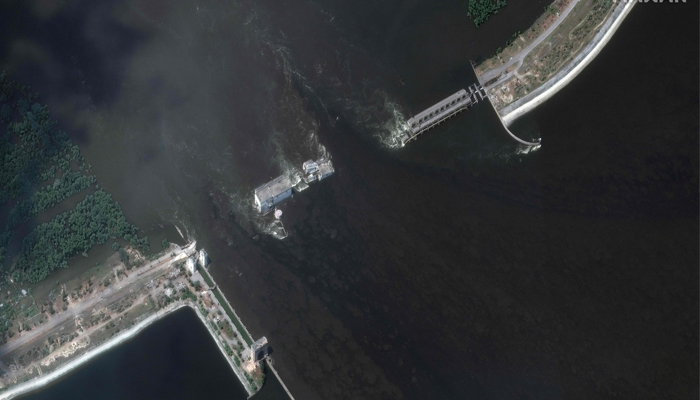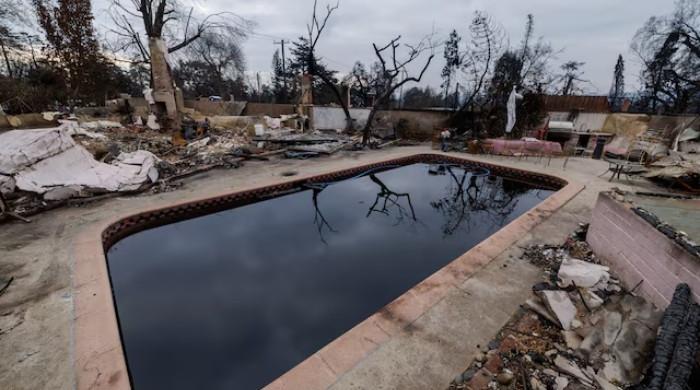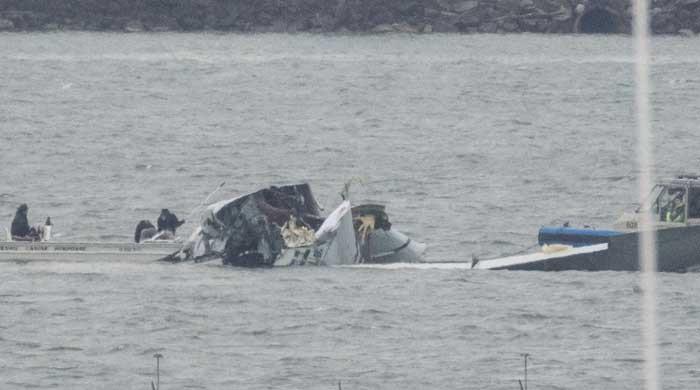What led to dam collapse in Ukraine? Here are some explanations
An explosion inside the dam was likely the cause of the breach, say experts
June 09, 2023

A dam collapse in Ukraine’s southern region Tuesday inundated farmlands, villages leading to power disruptions and access to clean water. It is regarded as one of the major ecological disasters in Europe. But experts have been wondering what led to its collapse or whether it was deliberate.
According to the West, Russia is blamed for the Nova Kakhovka dam because of its aggression on Ukraine.
Several civil engineering experts suggested that the explosion inside was likely the cause of the dam breach, although it’s not the only possible explanation.
The damage also affects the reservoir's north, where water levels fall. The collapse has left 94% of irrigation systems in Kherson, 74% in Zaporizhzhia and 30% in Dnipro regions "without a water source," according to the Ukrainian Agricultural Ministry.
There are three main theories about what led to the dam collapse:
Was Russia behind Ukranian dam collapse?
After the collapse, Ukrainian President Volodymyr Zelensky and other state officials blamed Moscow, saying Russian forces blew up the reservoir from inside.
According to Ukraine, the dam has been under Moscow’s control for the past year.
On the other hand, Moscow accused Kyiv of destroying the Soviet-era dam. According to CNN, this collapse coincided with Ukrainian forces gearing up for their widely expected summer counter-offensive.
The dam stretches the Dnipro River, a front line in the conflict and heavy fighting scene in southern Ukraine.
Kyiv said Russia blew up the dam "in panic."
Mykhailo Podolyak, a senior aide to Zelensky, said: "The terrorists’ goal is obvious — to create obstacles for the offensive actions of the Ukrainian Armed Forces."
“This once again confirms that the Kremlin is not thinking strategically, but rather in terms of short-term situational advantages. But the consequences are already catastrophic,” he told CNN.
Was Ukraine behind the dam collapse?
Russia denies that it was responsible and alleged Ukraine of dam destruction.
Kremlin spokesperson Dmitry Peskov claimed the attack was “planned and carried out by order received from Kyiv, from the Kyiv regime,” aiming to “deprive Crimea of water” and to distract from the battlefield. Ukraine has denied the accusations.
While the flooding will likely impact the counteroffensive by Kyiv, it’s also affecting Russian forces as some areas hit by the flooding are under Russian control. This indicates that the collapse was caught by surprise by Russian forces.
Experts noted that an internal explosion was a more likely explanation.
"Shelling by Ukraine is highly unlikely as it would need to get massive explosives close to the foundations,” Chris Binnie, a visiting professor at the University of Exeter and the chair of Tidal Engineering and Environmental Services, told the UK Science Media Centre.
Craig Goff, the technical director and lead of the Dams and Reservoirs team at HR Wallingford, said inflicting enough damage on the dam would require a precise strike.
“Back in the Second World War, there were the [Royal Air Force] Dambusters attacks on German dams and they had to spend a lot of time working out exactly where to place explosives on the dam in order to cause enough damage to cause it to breach,” he told CNN.
“It wasn’t a simple thing. You had to get the explosives right down on the upstream side of the dam at a deep depth. If it was just the top off the dam then it would probably still survive. You’d lose a bit of water but it would survive,” Goff said.
What about structural failure?
“The section of dam that we’re looking at is a concrete gravity dam, 35 meters high and 85 meters long (115 feet high and 279 feet long). This is a very common type of dam all around the world. They’ve been built for hundreds of years and if they were designed and built well and are maintained adequately, then the chance of a failure is very, very low. It would be extremely unusual for this type of dam to fail with no warning,” Goff said.
“The images I have seen show two breaches, either side of a structure. Were the breach to be caused by excess upstream water level there would only be one. Thus natural causes are highly unlikely,” Binnie said.
“The design of the dam will take into account these very high water levels, even extreme, biblical type flooding and there will be spillways to allow the water to go over. So again, the dam shouldn’t fail just because of high water levels,” Goff added.
“It is possible that if the hydropower station was at a critical point inside the dam and that something bad happened in that power house that possibly could have caused an explosion inside that would damage the dam,” Goff said.
He added, however, that it would be “extremely unlikely” for such an accident to happen without advance warning.











